
Academic Excellence Grades K-4 Conference Handout
Note: This is a conference handout from a workshop. Audio for this workshop is currently unavailable.
Academic Excellence Grades K-4
Susan Wise Bauer
Copyright 2003 by the author. This material is adapted from The Well-Trained Mind: A Guide to Classical Education at Home
Please do not reproduce without permission
CLASSICAL EDUCATION K-4
I. The distinctives of classical education
A. Characteristics of classical education
1. The three “developmental” stages of education
The “grammar stage” (elementary, roughly grades 1-4)
Focus: absorption of information, memorization
The “logic stage” (middle school years, roughly grades 5-8
Focus: development of analytical thinking skills, abstract thought, cause and effect, relationship between different fields of knowledge, the way facts fit together into a logical framework.
The “rhetoric stage” (high school, roughly grades 9-12)
Focus: fluent, forceful, original self-expression in speech and writing, specialization in particular areas of learning
2. Distinctives of classical teaching
Language-intensive, not image focused (that is, reflective, not reactive)
Trains the mind to analyze and draw conclusions
Through conversation
Through the use of original sources
Trains the student in self-discipline
3. A useful distinction: Skills and content areas
II. Classical education for kindergartners
A. Training in the “two languages”
1. Written and spoken language
Conversation
Beginning phonics
Consider a “just phonics” programs
Aim for 5-10 minutes per day.
PATIENT
FREQUENT
CONSISTENT
Beginning writing
Hold pencil correctly.
Draw circles and loops counterclockwise
Begin a handwriting program such as Zaner-Bloser Continuous Stroke
(www.zanerbloser.com)
2. Mathematical literacy
Talk about numbers
Count fingers, toes, eyes, rocks, sticks, silverware
Play hide & seek and count by 1’s, 2’s, 5’s, 10’s
Read number books together
Do simple mental math problems
Play Uno, Battle, Fish
Do addition, subtraction, division, multiplication with beans, pencils, chocolate chips
B. Interest-led exploration
C. Plenty of physical activity
Suggested resources:
Ruth Beechick, An Easy Start in Arithmetic, A Strong Start in Language, A Home Start in Reading
III. Academic goals, grades 1-4
A. Mathematics skills
Lay a foundation of concrete fact mastery
Continue to treat mathematics as a field for exploration.
Biographies of mathematicians
Puzzle-books
Picture books centered around mathematics
One Hundred Hungry Ants, Bonnie MacKain
Sir Cumference and the First Round Table, Cindy Neuschwander
Spaghetti and Meatballs for All: A Mathematical Story, Marilyn Burns
Anno’s Mysterious Multiplying Jar, Masaichiro Anno
Math for All Season, Greg Tang
Pigs Will Be Pigs: Fun With Math & Money, Amy Axelrod
How Much Is a Million?, David M. Schwartz
Curricula:
Saxon Math, http://www.saxonpublishers.com
A Beka Book, http://www.abekabook.com
Singapore Math, http://www.singaporemath.com
Son light, http://www.sonlight.com
Consider a combination of programs
B. Language skills
1. Phonics
Continue until principles of sounding out words have been completely covered.
Remember to be careful about linking reading and writing together.
Combine phonics study with instructional reading.
The three levels of reading:
INSTRUCTIONAL LEVEL: Difficult, but possible with support;
requires direct teacher/parent help
ON LEVEL: The child can operate independently with occasional
help.
BELOW LEVEL: Easy, for-fun reading; free-time reading that
increases speed
2. Spelling
Two approaches to spelling: Dictate from a phonics program
Or, use a separate spelling program that teaches the rules of spelling
Spelling Workout (MCP/Pearson) 800-321-3106
http://www.pearsonlearning.com/mcp/mcp_default.cfm
Spelling Power 888-SPELL-86 (1-888-773-5586) http://www.castlemoyle.com/
A Beka Spelling 800-874-2352
http://www.abeka.com
3. Grammar
The names, functions, and definitions of the parts of speech:
Noun, verb, adjective, adverb, article, interjection, preposition,
conjunction
Lists of linking verbs, helping verbs, state of being verbs, and prepositions
The elementary rules that govern the relationship of these words
The conventions of punctuation and capitalization
First Language Lessons for the Well-Trained Mind, 877-322-3445
A Beka (from third grade on), 800-874-2352
http://www.abeka.com
Shurley Grammar, 800-566-2966
http://www.shurley.com/
4. Writing
INARTICULATE IDEA IDEA IN WORDS WORDS ON PAPER
A “writing program” for grades 1-4:
First grade: Copy sentences every day from good writers
Narrate orally
Second grade: Write single sentences from dictation
Narrate orally and begin to take narration back down
Third grade: Write two to three sentences at a time from dictation
Write brief summaries
Fourth grade: Write paragraphs from dictation: descriptions, dialogue, news stories, etc.
Write longer summaries
C. History
The chronological study of history: History in perspective
Three repetitions of the same four-year pattern:
Ancients 6,000 BC – AD400
Medieval/Early Renaissance AD 400-1600
Late Renaissance/ Early Modem 1600-1850
Modem 1850-present
Grades 1-4: simple, concentrating on stories and biographies
Technique: Use a chronological “spine” and supplement with “real books”
The Story of the World, https://welltrainedmind.com
The Usborne Internet-Linked Encyclopedia of World History
A Child’s History of the World, V. M. Hillyer
Require the child to narrate back what he’s heard you read/read himself
Move towards written narrations
D. Literature
Follow each reading in history with:
1. Simple nonfiction (picture book level) on the topic. Ask child to narrate
information back to you, or to write two or three sentences in summary
2. Simple fiction (picture book or read-aloud) topic. Ask child to narrate,
write, or draw a picture.
Example:
The Story of the World, Chapter Seventeen: Babylon Takes Over Again!
Contains the Babylonian conquest of Assyria, Nebuchadnezzar’s building projects, The Hanging Gardens of Babylon
SAMPLE NONFICTION “PICTURE BOOKS”
Great Wonders of the World, by Russell Ash (DK, 2000) The ancient wonders, including the Hanging Gardens of Babylon, beautifully illustrated and explained.
The Seven Wonders of the Ancient World, by Reg Cox and Neil Morris, illus. James Field (Chelsea House, 2000). Links the Seven Wonders to broader cultural developments, including those in Babylon.
SAMPLE “LITERATURE BOOKS”
Forty Fortunes: A Tale of Iran, by Aaron Shepard (Clarion Books, 1999). A fortune-telling peasant unwittingly tricks a band of local thieves into returning the king’s stolen treasure; set in the area of ancient Babylonia.
1001 Arabian Nights (Oxford Story Collections), by Geraldine McCaughrean (OUP, 2000). Stories from the ancient Near East.
The King in the Garden, by Leon Garfield (Lothrop, Lee & Shepard, 1984). A little girl named Abigail finds mad King Nebuchadnezzar eating the flowers in her garden and helps him return to his palace.
E. Science
Studied in a four-year pattern roughly corresponding to the periods of scientific
discovery.
NAME OF PERIOD YEARS COVERED SCIENTIFIC SUBJECTS GRADES STUDIED
Ancients 6,000 BC – AD400 Biology Classification Human body First, fifth, ninth
Medieval/Early Renaissance AD 400-1600 Earth science Astronomy Second, sixth, tenth
Late Renaissance/ Early Modem 1600-1850 Chemistry Third, seventh, eleventh
Modem 1850-present Physics Computer science Fourth, eighth, twelfth
What are your goals?
– Arouse enthusiasm and satisfy natural curiosity
– Accustom child to reading and writing as a method of discovery
– Teach child how to observe carefully
– Show science to be a coherent field of study with its own rules
– Introduce child to the vocabulary of science
What is your method?
– Study those aspects of science which the child finds naturally interesting
– Read about each subject; write briefly
– Focus on observation-centered study (NOT deduction-based study)
– Use a science “spine” that concentrates the child’s attention on a single area
– Find a program which uses, and explains, proper vocabulary
What do you require of the child?
– Concentration for 15 minutes to 45 minutes at a time
– Reading of 1 paragraph to 2 pages on a scientific topic
– Writing of 1 sentence to two paragraphs in summary
– Proper use and spelling of vocabulary
Go back to the Well Trained Mind Home
See also the complete article index.



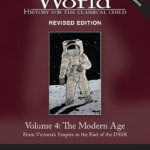
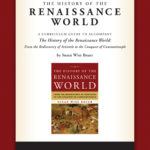
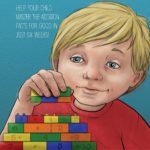
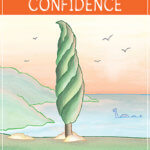


2 thoughts on “Academic Excellence Grades K-4 Conference Handout”
Susan,
Is this info updated with your 4th edition or are these the same as the 2003 version?
Thanks
Joshua
Hello Joshua…Yes, this information is compatible with the 4th edition. The only new resource yet not listed here is Kate Snow’s “Preschool Math at Home,” available from welltrainedmind.com/store